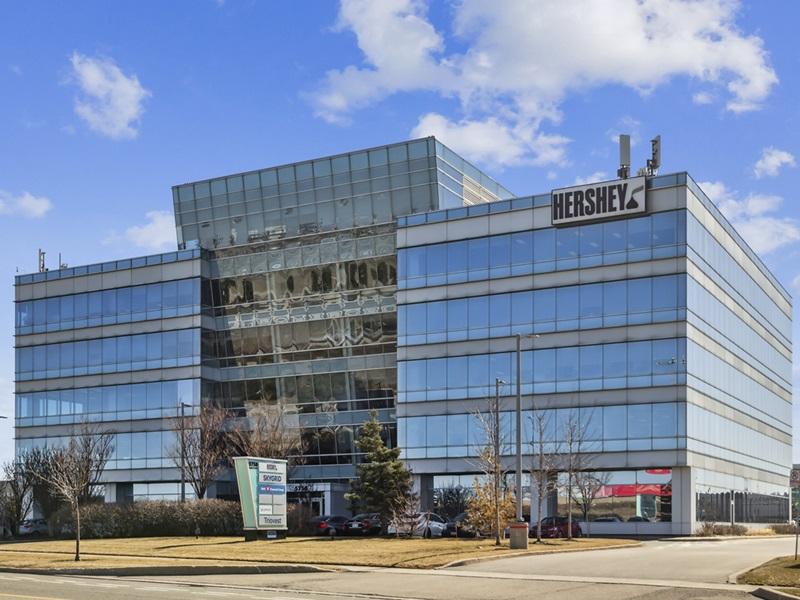
Industrial remains the Greater Toronto Area's (GTA) most desirable asset class, given its low availability, strong rent growth and continued appetite for newly developed product.
“Five years ago in Q4 2018, rents were seven dollars (per square foot in the GTA),” said Colliers executive vice-president Marc Kirshenbaum during a May 30 Land & Development Conference panel discussion at the Metro Toronto Convention Centre.
“Now we're close to $20, so tenants looking for renewals are in for sticker shock.”
Industrial properties that were selling for close to $200 per square foot in 2018 are close to $400 per square foot now.
The volume of industrial land sales jumped by 420 per cent from 2020 to 2021 due to a surge in investment in new warehousing and distribution centres, Kirshenbaum added.
Will the good times in industrial continue?
The first question asked of the panel by moderator and Cadillac Fairview senior vice-president of industrial development Paul Macchione was: Will these good times continue?
“We’re seeing continued strong strength in the industrial market,” said John Scioli, Panattoni Development Company research manager for strategy and market intelligence .
“We’re still seeing strong pre-leasing of 40 to 50 per cent, which in an historical context is still a very strong market.”
Panattoni specializes in building speculative properties and receives multiple offers for the industrial facilities it builds across the GTA, Scioli added.
While new development seems to be slowing, there’s still plenty of new product scheduled for delivery during the next 12 to 24 months.
Macchione asked if there are concerns about an over-supply of space, or whether absorption will continue to keep pace.
There’s been record-setting net absorption for industrial properties across North America for the past two years, according to Scioli.
He doesn’t have any concerns about over-supply in the GTA, the continent’s fourth-largest industrial market.
Tenant demand is still there, sales volumes have dropped due to higher interest rates and there’s a chance some spec-built developments will be sold to design-build users, Kirshenbaum told the panel.
What industrial tenants are looking for
While 40-foot clear heights are desired by many tenants for warehousing and logistics spaces, Scioli said manufacturers generally don’t need ceilings to be as high.
Having ample electric power inside buildings is becoming more important for users as is having an adequate amount of electric vehicle charging stations for the growing numbers of cars, vans and trucks that will no longer be gas-fuelled in the future.
Kirshenbaum said tenants want more mid-bay product of 20,000 to 100,000 square feet as many new developments are a minimum of 250,000 square feet.
He primarily works in the Toronto suburbs of North York and Vaughan where there are a lot of older buildings with 14- to 16-foot clear heights and tenants looking for newer, more efficient spaces.
Scioli said mid-bay and small-bay industrial facilities are more expensive to build, but he’s starting to see tenants split up larger buildings to accommodate the space needs of these users.
Greater Golden Horseshoe markets
Scioli noted the boundaries of the GTA industrial market are expanding.
There are three million square feet of development in Waterloo Region, as well as expansion in Hamilton and Durham, giving tenants who don’t need to be in the heart of the GTA more options at lower prices.
Kirshenbaum likes Barrie as an industrial market because it has Lake Simcoe Regional Airport, which means 20-minute access to Toronto and 90-minute access to major northeastern United States cities.
The city north of Toronto also offers GO Transit commuter train and bus service and a nearby Lakehead University campus in Orillia, which Kirshenbaum said partners with 6,200 employers in the area and specializes in industrial-related trades.
Home prices are half of what they are in Toronto and industrial land is cheaper as well.
Scioli said the City of Hamilton has been cooperative and efficient with entitling developments and Panattoni is looking to break ground soon on its second project in the city.
He said municipal officials in Oshawa and Keswick, a city of fewer than 30,000 located on the shore of Lake Simcoe north of Toronto, have also been great to work with.
Kirshenbaum said big-box industrial space in south Etobicoke hasn’t leased as quickly as expected as expensive housing has negatively impacted the labour market.
He sees the area more as the spoke in a hub-and-spoke model, believing it’s better suited for smaller warehouse facilities serving larger hubs.
Lease and insurance considerations
WeirFoulds LLP executive partner Lisa Borsook said leases for industrial facilities that aren’t yet built provide more challenges than those for existing buildings.
Tenants can have concerns about outdoor rights, the types of alterations they can make, additional electrical power needs and escalating budgets.
The biggest concern, however, is with construction delays and how they can impact both moving in and installing specialized automation systems that can cost in the tens of millions of dollars.
HUB International senior risk services consultant Chris Della Mora said it’s important to prepare as early as possible when it comes to insuring industrial buildings.
Insurance is a high-cost consideration that can go higher, or even make facilities uninsurable, without advance planning.
Della Morra stressed the importance of "being ahead of the game in knowing what’s going to be in the facility" as even minor changes during the retrofitting process can have a major impact on insurability and costs.
He recommends getting insurance companies involved as early as possible as it’s easier to make changes at the design phase than after construction starts.
Della Mora cited the example of a former food distribution centre purchased and retrofitted to become a plastics manufacturing centre. Then the company was told it was uninsurable due to the new use.
Borsook said she always gets in touch with insurance companies to find out how insurance clauses will work in a lease, to anticipate risks and work out who bears responsibility for additional costs or construction delays.
ESG considerations
Environmental, social and governance (ESG) has been a focus for both Panattoni and its capital partners as it’s become increasingly important to create more efficient buildings.
Green bonds for financing environmentally friendly developments can also offer better interest rates.
While tenants in Europe are willing to pay extra for greener and more sustainable buildings, or may refuse to move into facilities that aren’t of a certain environmental standard, Scioli said that sentiment hasn’t yet crossed the ocean to Canada.
European-headquartered firms are leading the charge for more ESG considerations in Canada and Scioli expects it to grow in importance.
Future-proofing buildings by making them net-zero-carbon-ready, even if they’re not cutting carbon emissions to zero already, should become a more important goal.
ESG is a hotter topic among landlords than tenants, according to Kirshenbaum, although more tenants are developing sustainability plans.
“A tenant going into a LEED building is great for their corporate profile,” Kirshenbaum said.
“But the reality is that we don’t see tenants having mandates for landlords regarding work that needs to be done on the ESG side.”
Borsook said she’s been asked by landlords to include as many ESG elements as possible in leases and hasn’t received as much pushback from tenants as she anticipated.
Construction and interest costs
Panattoni is moving forward with all of its planned projects and is about to break ground on a 440,000-square-foot building in Guelph, but Scioli said construction financing is presenting challenges for some developers as some lenders exit the market.
Scioli said Panattoni is incorporating four per cent annual rent increases in its leases, up from 2.5 per cent in the past, to help keep up with rising costs.










